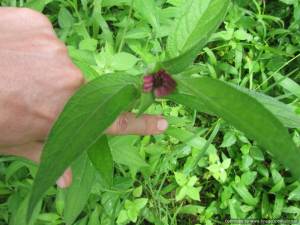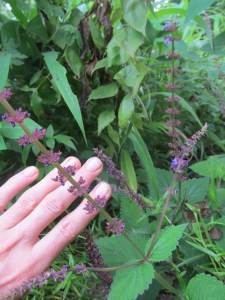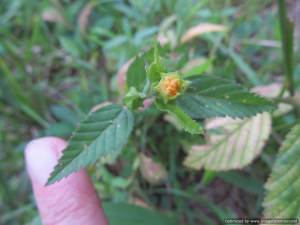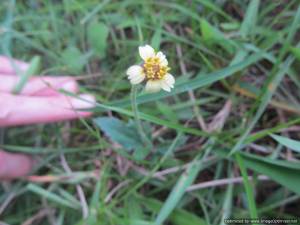Today I photographed as many wild flowers as I could find in our garden. The photos are below and as I find out more information about them I’ll write it beside them. My finger features in most of them to indicate the size.
I’m reminded of these Bible verses from Matthew 6:28-34
“And why do you worry about clothes? See how the flowers of the field grow. They do not labour or spin. Yet I tell you that not even Solomon in all his splendor was dressed like one of these. If that is how God clothes the grass of the field, which is here today and tomorrow is thrown into the fire, will he not much more clothe you – you of little faith. So do not worry, saying “What shall we eat?” or “What shall we drink?” or “What shall we wear?” For the pagans run after all these things, and your heavely Father knows that you need them. But seek first his kingdom and his righteousness and all these things will be given to you as well. Therefore do not worry about tomorrow, for tomorrow will worry about itself. Each day has enough trouble of its own.”
I pray that in all I do here on our small piece of land that I would not worry about food, drink or clothes, trusting that to God, but I woulld seek first His kingdom and righteousness.
Update 14/08/15 – I’m grateful to botanist Elisha Emmanuel for his comment below identifying many of the flowers. I have written his names beside the flowers.
|
1 |
 |
Galinsoga quadriradiata The young leaves and stem can be cooked and eaten, or the leaves can be dried as a herb. Useful as animal forage too. |
|
2 |
 |
|
|
3 |
 |
Ageratum conyzoide Also called goat weed, chick weed, this is an introduced species. It is very poisonous but can be used as an insecticide and nematicide. |
|
4 |
 |
|
|
5 |
 |
Bidens pilosa. Common name: Cobblers peg The tender shoots and leaves can be used as a vegetable, fresh or dried. Can also be applied on a fresh wound. |
|
6 |
 |
Kyllinga bulbosa Not much info out there on this one, its usually deemed a weed although has some medicinal uses, see: |
|
7 |
 |
Hyptis, solenostemon monostachyus Hausa Tùmúƙùn bírí These are commonly known as “bush mint” but I’m not sure that its very minty. However, it does repel mosquitoes so I intend to transplant a lot of it to near the house! It can be eaten as a herb and has some medicinal uses. http://database.prota.org/PROTAhtml/Solenostemon%20monostachyus_En.htm |
|
8 |
 |
Lantana camara. Common name: Lantana Hausa Kímbár ̃máhàrbáá10 An invasive species originally spread from Central America. It is toxic to animals and is also allelopathic – it excretes chemicals which inhibit the growth of other species nearby. I did read somewhere that burying the leaves when you plant sweet potatoes repels weevils. |
|
9 |
 |
Euphorbia heterophylla Common name – fireplant or ponsietta, Beautiful as an ornamental plant, very Christmassy! This plant is poisonous and reduces crop yields. http://www.fao.org/agriculture/crops/thematic-sitemap/theme/biodiversity/weeds/listweeds/eup-het/en/ |
|
10 |
 |
Cassia mimosoides A legume, woohoo! (It adds nitrogen to the soil). It’s usually an annual. Can be planted with other crops to add nitrogen, also has some use as forage. |
|
11 |
 |
|
|
12 |
 |
Aspilia ciliata Not much info to be found on this |
|
13 |
 |
Gloriosa superbab, Common name – flame lily Isn’t it beautiful! Propogate it by dividing the rhizome. It is poisonous but has some medicinal uses. |
|
14 |
 |
Waltheria indica Common name – Sleepy morning Hausa Yankufa Some medicinal qualities http://earthmedicineinstitute.com/more/library/medicinal-plants/waltheria-americana/ |
|
15 |
 |
|
|
16 |
 |
Emilia species Don’t know exactly which one. Same family as sunflowers! |
|
17 |
 |
Chamaecrista rotundifolia A fast covering, perennial, forage legume. Animals may prefer to eat it mature. Round-leaf cassia can be used for open grazing, but also for hay and silage. The nitrogen-fixing plant also acts as green fertilizer and has potential to increase crop yields either directly by increasing soil fertility or indirectly through application of higher quality manure from animals on farm land which eat the legumes. |
|
18 |
 |
|
|
19 |
||
|
20 |
 |
Sida acuta Common name – wire weed. As the name suggests its very tough and can be used for roping. A very invasive weed that is not eaten by people or animals. |
|
21 |
 |
Oldelandia croymbosa Young shoots and leaves are eaten. When cooked with other leaves they help to tenderise them. http://tropical.theferns.info/viewtropical.php?id=Oldenlandia+corymbosa |
|
22 |
 |
Tridax procumbens. Common name: coat buttons. It attracts butterflies!! http://www.zimbabweflora.co.zw/speciesdata/species.php?species_id=160700. Many medicinal uses https://en.wikipedia.org/wiki/Tridax_procumbens |
|
23 |
 |
Emilia sonchifolia The whole plant, flowers, leaves etc can be eaten raw or cooked. The flower heads are chewed and kept in the mouth for 10 minutes to prevent tooth decay. http://www.pfaf.org/user/Plant.aspx?LatinName=Emilia+sonchifolia |
|
24 |
 |
Tephrosia pedicellata legume? |
|
25 |
 |
Emilia species sunchus – in the dandelion family. |
|
26 |
 |
Amaranthus sp. Common name: While spinach Hausa Aleyhu Edible, a popular leaf in Nigeria. |
|
27 |
 |
Cosmos sulhureus This grows all over my garden, its beautiful and colourful! |
|
28 |
 |
|
|
29 |
 |
Zinnia A useful companion plant as they attract hummingbirds who eat whitefly. Also attracts butterflies and honey bees. Propogate through division. |
|
30 |
 |
Clendendrum capitata |
|
31 |
 |
Diodia Pretty low ground covering plant that attracts bees and butterflies. |
|
32 |
 |
Guizotia hausa abamacha Edible. Par boil, add ground kuli kuli, onions, spices, tomatoes etc to make a soup. |
|
33 |
 |
Crotalaria Hausa Báƙár ̃ bíí rááná |
|
34 |
 |
Tephrosia poisonous? Legume? |
|
35 |
 |
Another type of tephrosia poisonous? Legume? |
Hausa names from http://www.rogerblench.info/Ethnoscience/Plants/General/Hausa%20plant%20names.pdf
1,14-Galinsoga quadriradiata
3- Ageratum conyzoide
5,6 Bidens pilosa. Common name: Cobblers peg
8- Hyptis species
9-Lantana camara. Common name: Lantana
11- Cassia mimosoides
13- Aspilia ciliata
16-Gloriosa superbab
17-Waltheria indica
19- Emilia species
20-Chamaecrista rotundifolia
23-Sida acuta
24- Oldelandia croymbosa
26 Emilia sonchifolia
27,10-Euphorbia heterophylla
28,22- Bides pilosa
29- Tephrosia pedicellata
30- Emilia species
31, 25-Tridax procumbens. Common name: coat buttons
32- Amaranthus sp. Common name: While spinatch
33-Cosmos sulhureus
35- Zinnia
LikeLike
Elisha, you are a wonder, thank you so much for your valuable contribution! I will copy the names up beside the photos. Thank you!
LikeLike
Thanks so much for the information. I plan to ask a friend who studied botany about these native weeds and plants. If you have any friend or know of any student that syudied or is studying Botany at the university closest to you, you might be able to ask about the weeds and plants.
LikeLike